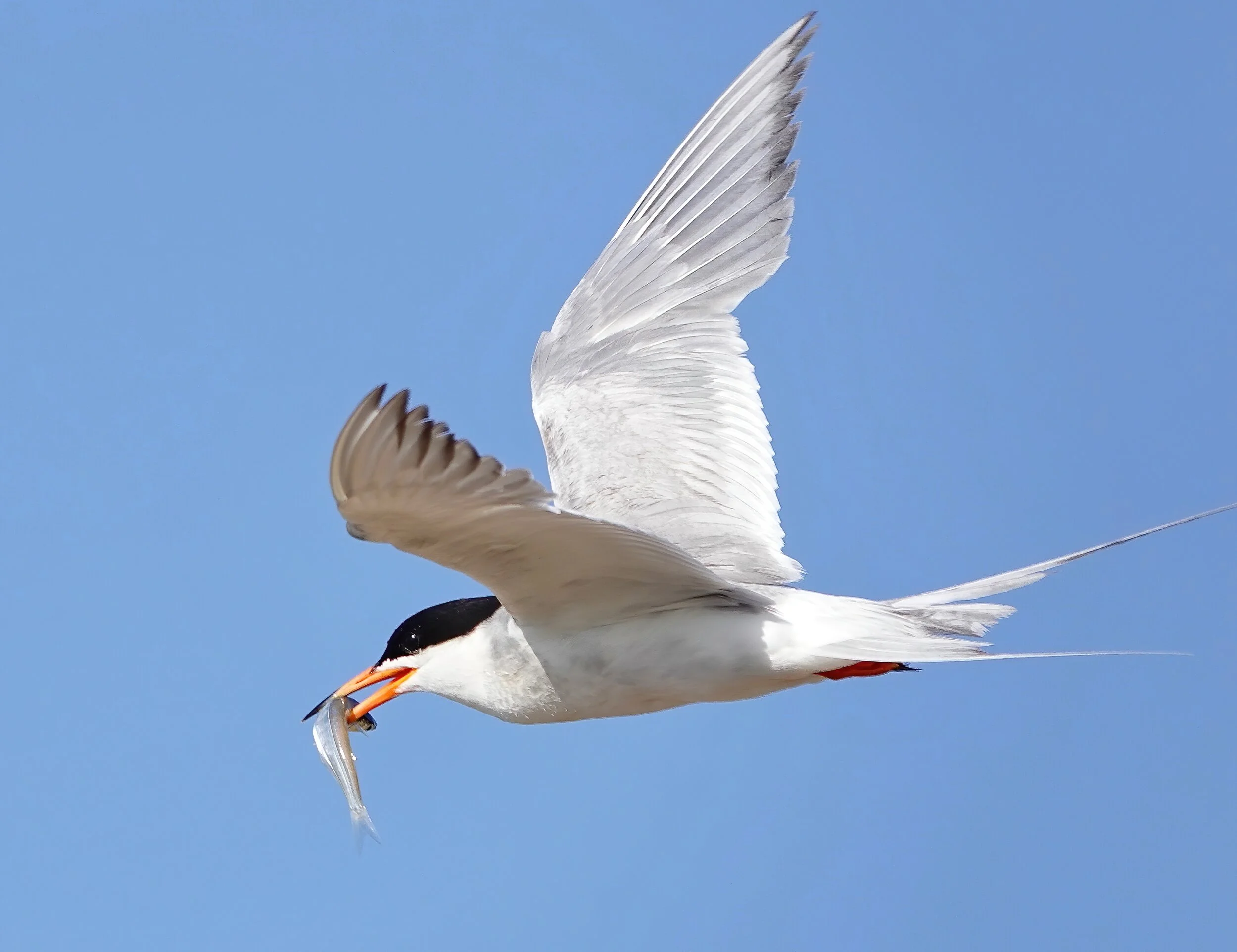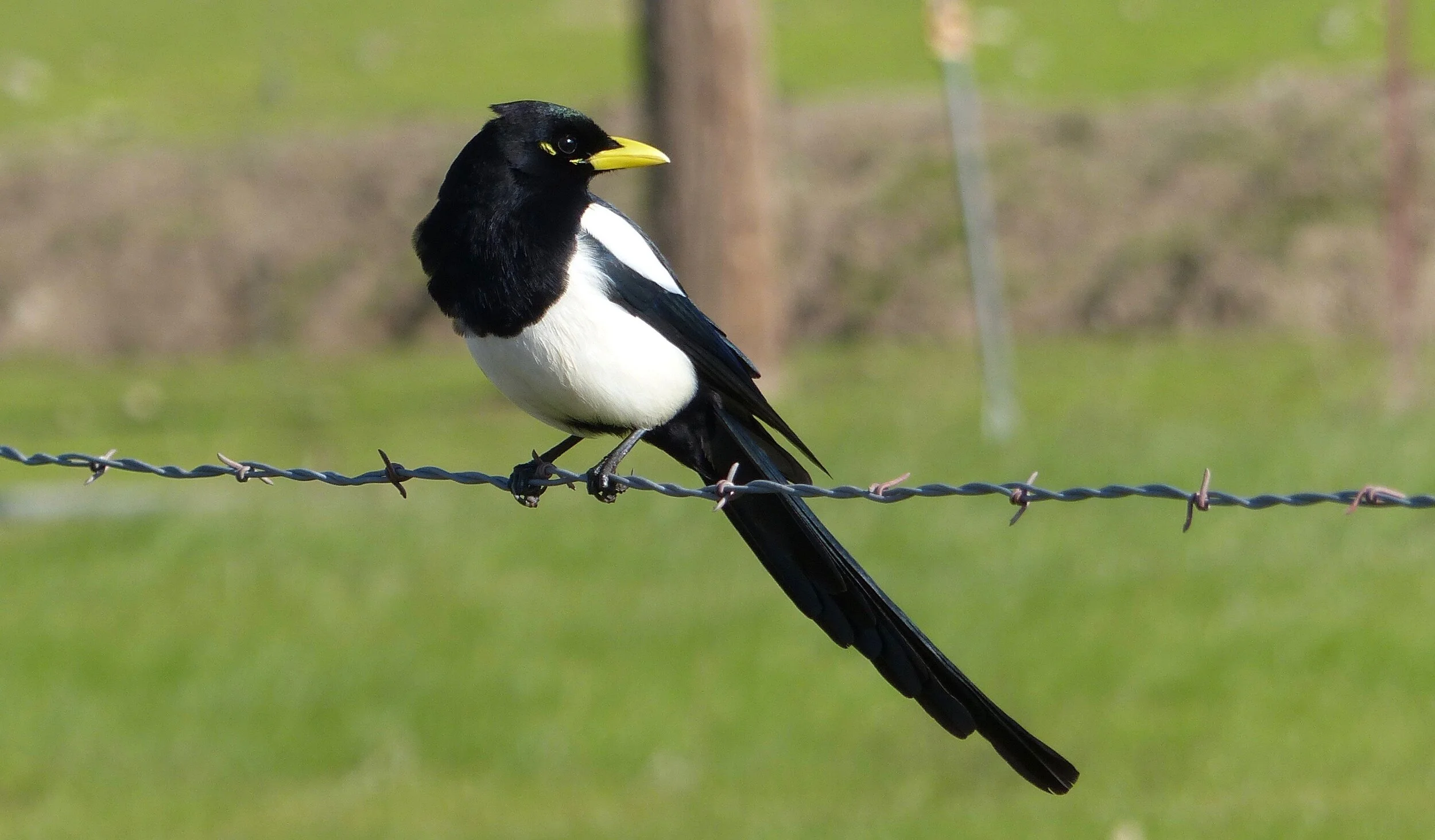Visiting Santa Clara County
Welcome to Santa Clara County! We are fortunate to have a diversity of habitats here, from tidal marsh to chaparral, farmed fields to grasslands, and oak woodlands to redwood groves. We also have parks and preserves throughout our urban areas. As a consequence, we enjoy a rich variety of bird life throughout the year.
We invite you to visit SCVAS at our headquarters, located in a historic ranch house at McClellan Ranch Preserve (yellow pin on map below). Enjoy watching our bird feeders, where you are likely to see many West Coast species, like Anna’s Hummingbird, Acorn Woodpecker, Nuttall’s Woodpecker, California Scrub-Jay, Chestnut-backed Chickadee, Oak Titmouse and California Towhee. After viewing our feeders, stroll along Stevens Creek on a trail shaded by oaks, sycamores, and walnuts, which attract many birds, or look for birds along the paved path to Blackberry Farm. Stop in our office to ask us for tips on where to find a special bird or to pick up a copy of our newly updated Santa Clara County Checklist of Birds.
You can also try our birding suggestions described below and linked on our interactive map, explore all of our self-guided field trips, browse local bird sightings in South Bay Birds, or sign up for one of our in-person field trips. Happy birding!

Interactive Map. Zoom, drag, click on pins, or click "Larger Map" to see all trips.
HALF A DAY
Do you only have a short time to go birding? Take a look at our self-guided field trips in Santa Clara County’s urban areas. These trips are close to homes and businesses yet offer lots of opportunities to observe our local bird species. You’re sure to find a trip that fits your schedule.
One Day
If you have one day to bird in Santa Clara County, we suggest visiting the Don Edwards National Wildlife Refuge in Alviso, and one location in either the east or west hills.
OUR BAYFRONT RECOMMENDATION
Santa Clara County is on the southern shores of San Francisco Bay. This end of the bay was once a vast tidal marsh with shallow sloughs meandering through pickleweed and cordgrass. In the 1800’s and 1900’s, much of this area was converted to salt evaporation ponds which brought in new bird species. Today, some of these ponds have been restored to tidal marsh and now the baylands, with its extensive shoreline and trail system, is rich with bird life year-round.
We recommend the Don Edwards San Francisco Bay National Wildlife Refuge in Alviso (red pin on map above) where you can explore New Chicago Marsh, the tidal Mallard Slough and Salt Pond A16. Read our seasonal guides below for directions and more details.
Another option along the bay is to try your luck at finding the near threatened Ridgway’s Rail near the visitor center at Palo Alto Baylands (read these self-guided field trips for more information).
Our West and East Hills Recommendations
The hills that frame both the east and west sides of Santa Clara Valley offer grasslands, oak woodlands and chaparral as well as orchards and farmland. At first glance they seem to be mirror images, but in fact, the climate and therefore plant life of the two ranges is quite different. The western foothills are tempered by Pacific fog in the summer and rain in the winter, and are topped by redwoods and lush undergrowth. The eastern foothills, on the other hand, are generally drier and hotter, with conifers limited to the highest areas of Mt. Hamilton and Henry W. Coe State Park.
For those visiting from outside California or the western states, our hills offer many western bird species of interest such as California Quail, Wrentit, California Thrasher and California Towhee in the chaparral, and Acorn Woodpecker, Nuttall’s Woodpecker, California Scrub-Jay, Oak Titmouse, and Chestnut-backed Chickadee in the oak woodlands.
We recommend Stevens Creek County Park (blue pin on map above) in the West Hills, just a short drive from I-280 in Cupertino. Or, enjoy a drive along a narrow winding road with wonderful views of the valley and bay below on your way to explore Joseph D. Grant County Park (orange pin on map above) in the East Hills. Read our seasonal self-guided field trips below for directions and more details.
Even More Time
If you have a little more time, try Coyote Valley Open Space Preserve (green pin on map above) for a taste of our agricultural areas in the southern part of the county. Historically Amah-Mutsun land, this property was slated for development into luxury homes. Now owned and managed by the Santa Clara Valley Open Space Authority, it is part of a protected network of open space in Coyote Valley (read about conservation in Coyote Valley here). This is the place to spot Yellow-billed Magpies and Tricolored Blackbirds. Read our seasonal self-guided field trips below to help you bird this area.
Our South County Recommendation
All Self-Guided Field Trips
Visit the Self-guided Field Trips page for our complete collection of guides.
Hazards
Be wary of rattlesnakes (rare) in the hills and feral pigs that may be aggressive when their young are present. Know how to identify poison oak which can be found in almost all of our parks, and remember to check for ticks.
ADVICE
If you would like advice on where to bird in Santa Clara County or how to find a bird of interest, you may contact us using the button below.
However long you have to visit our county, we hope you love this area as much as we do!
Adapted from Birding at the Bottom of the Bay, South San Francisco Bay, Third Edition.
Banner Photo: Joseph D. Grant County Park by Eve Meier









The San Francisco Bay is a critical habitat in spring, both as a migratory stopover and as breeding grounds for many birds. Birding at the Don Edwards National Wildlife Refuge Environmental Education Center (EEC) in Alviso allows close views of the extraordinary species diversity that makes use of this habitat, all in a short distance on flat ground.